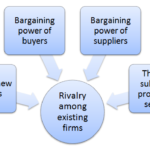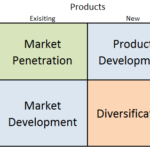Dear, Prof.Joao, Prof. Tom, Dr. Sergio Correia & Others Stata Users,
I am an economics graduate student, using gravity model in my dissertation. I run the following code :
reghdfe ln_domestic_trade ln_foreigntrade_m, abs( id_i id_j id_i#year id_j#year id_i#id_j) vce(robust)
(Where ln_domestic_trade: Dependent Variable & Ln_foreigntrade_m: independent variable)
The result is :
note: ln_foreigntrade_m is probably collinear with the fixed effects (all partialled-out values are close to zero; tol = 1.0e-09)
(MWFE estimator converged in 6 iterations)
note: ln_foreigntrade_m omitted because of collinearity
HDFE Linear regression Number of obs = 12,916
Absorbing 5 HDFE groups F( 0, 9857) = .
Prob > F = .
R-squared = 0.9563
Adj R-squared = 0.9428
Within R-sq. = 0.0000
Root MSE = 0.5671
-----------------------------------------------------------------------------------
| Robust
ln_domestic_trade | Coef. Std. Err. t P>|t| [95% Conf. Interval]
------------------+----------------------------------------------------------------
ln_foreigntrade_m | 0 (omitted)
_cons | 5.978083 .0049899 1198.04 0.000 5.968302 5.987864
-----------------------------------------------------------------------------------
Absorbed degrees of freedom:
-----------------------------------------------------+
Absorbed FE | Categories - Redundant = Num. Coefs |
-------------+---------------------------------------|
id_i | 51 0 51 |
id_j | 51 1 50 |
id_i#year | 255 51 204 ?|
id_j#year | 255 51 204 ?|
id_i#id_j | 2601 51 2550 ?|
-----------------------------------------------------+
? = number of redundant parameters may be higher
Questions:
i) Am i using the right command to include Exporter_Time_FE, Importer_Time_FE and Pair_FE in gravity model?
ii) My main independent variable :
log of foreign_trade_m is omitted, and the coefficient became zero. How can i solve this kind of problem ?
__________________________________________________ __________________________________________________ ____________-
I also used the ppmlhdfe:
ppmlhdfe ln_domestic_trade ln_foreigntrade_m, abs( id_i id_j id_i#year id_j#year id_i#id_j) vce(robust)
output of this command is given below:
(dropped 63 observations that are either singletons or separated by a fixed effect)
note: 1 variable omitted because of collinearity: ln_foreigntrade_m
Iteration 1: deviance = 2.0395e+03 eps = . iters = 4 tol = 1.0e-04 min(eta) = -1.05 PS
Iteration 2: deviance = 1.6587e+03 eps = 2.30e-01 iters = 4 tol = 1.0e-04 min(eta) = -2.22 S
Iteration 3: deviance = 1.6204e+03 eps = 2.36e-02 iters = 3 tol = 1.0e-04 min(eta) = -3.11 S
Iteration 4: deviance = 1.6177e+03 eps = 1.69e-03 iters = 3 tol = 1.0e-04 min(eta) = -3.58 S
Iteration 5: deviance = 1.6176e+03 eps = 5.10e-05 iters = 2 tol = 1.0e-04 min(eta) = -3.70 S
Iteration 6: deviance = 1.6176e+03 eps = 1.42e-07 iters = 2 tol = 1.0e-05 min(eta) = -3.71 S
Iteration 7: deviance = 1.6176e+03 eps = 2.07e-12 iters = 2 tol = 1.0e-06 min(eta) = -3.71 S
Iteration 8: deviance = 1.6176e+03 eps = 1.64e-16 iters = 1 tol = 1.0e-08 min(eta) = -3.71 S O
------------------------------------------------------------------------------------------------------------
(legend: p: exact partial-out s: exact solver h: step-halving o: epsilon below tolerance)
Converged in 8 iterations and 21 HDFE sub-iterations (tol = 1.0e-08)
HDFE PPML regression No. of obs = 12,853
Absorbing 5 HDFE groups Residual df = 9,811
Wald chi2(0) = .
Deviance = 1617.590339 Prob > chi2 = .
Log pseudolikelihood = -23346.12686 Pseudo R2 = 0.2187
-----------------------------------------------------------------------------------
| Robust
ln_domestic_trade | Coef. Std. Err. z P>|z| [95% Conf. Interval]
------------------+----------------------------------------------------------------
ln_foreigntrade_m | 0 (omitted)
_cons | 1.877638 .0007805 2405.60 0.000 1.876109 1.879168
-----------------------------------------------------------------------------------
Absorbed degrees of freedom:
-----------------------------------------------------+
Absorbed FE | Categories - Redundant = Num. Coefs |
-------------+---------------------------------------|
id_i | 51 0 51 |
id_j | 51 1 50 |
id_i#year | 255 51 204 ?|
id_j#year | 255 51 204 ?|
id_i#id_j | 2584 51 2533 ?|
-----------------------------------------------------+
? = number of redundant parameters may be higher
.
Questions:
iii) Here also I also got the same kind of Issue. What is the actual difference between reghdfe and ppmlhdge ?
Could you please help to solve this issue?
Thank you so much for the time.
Regards
Nawaraj

